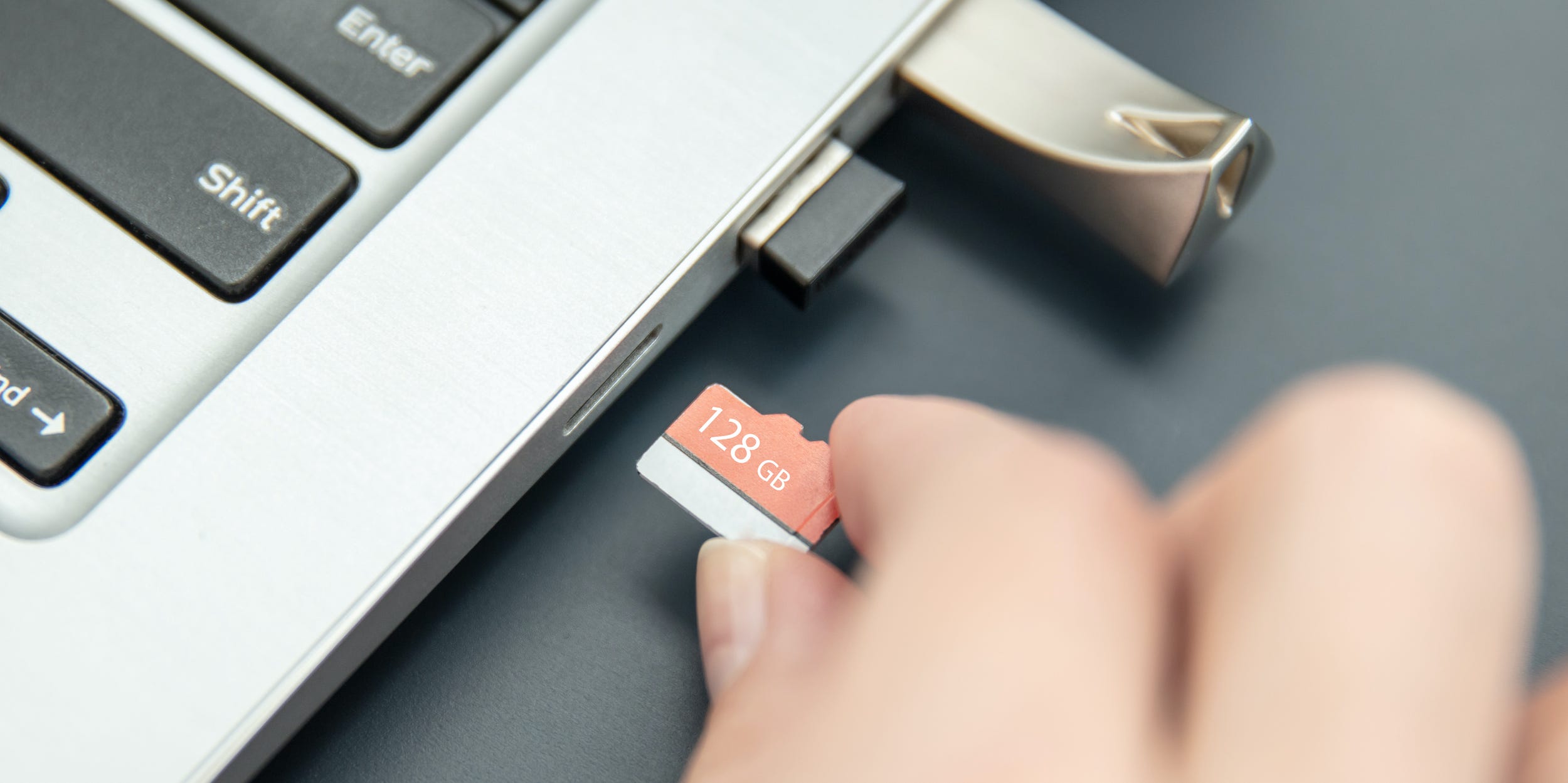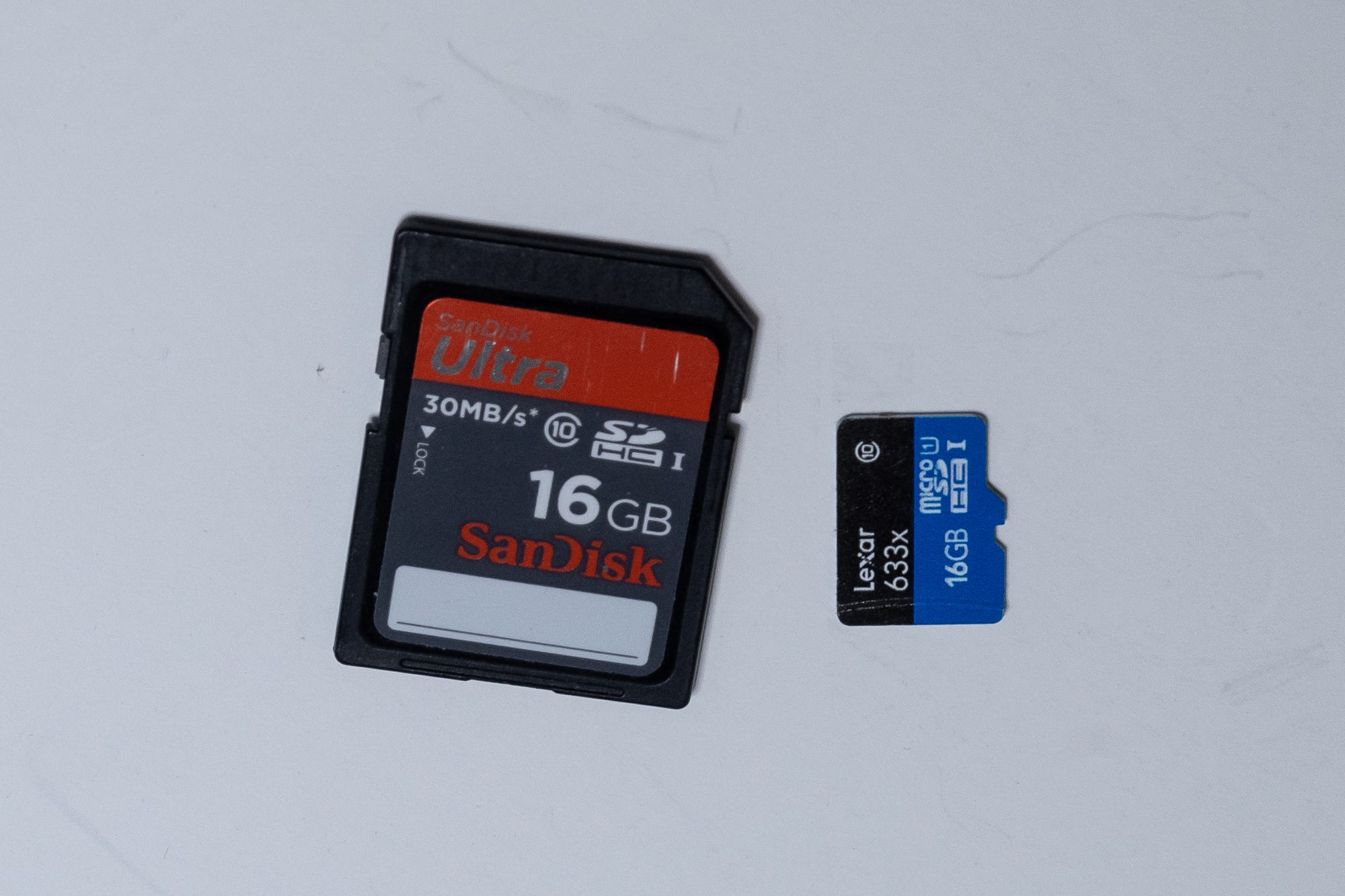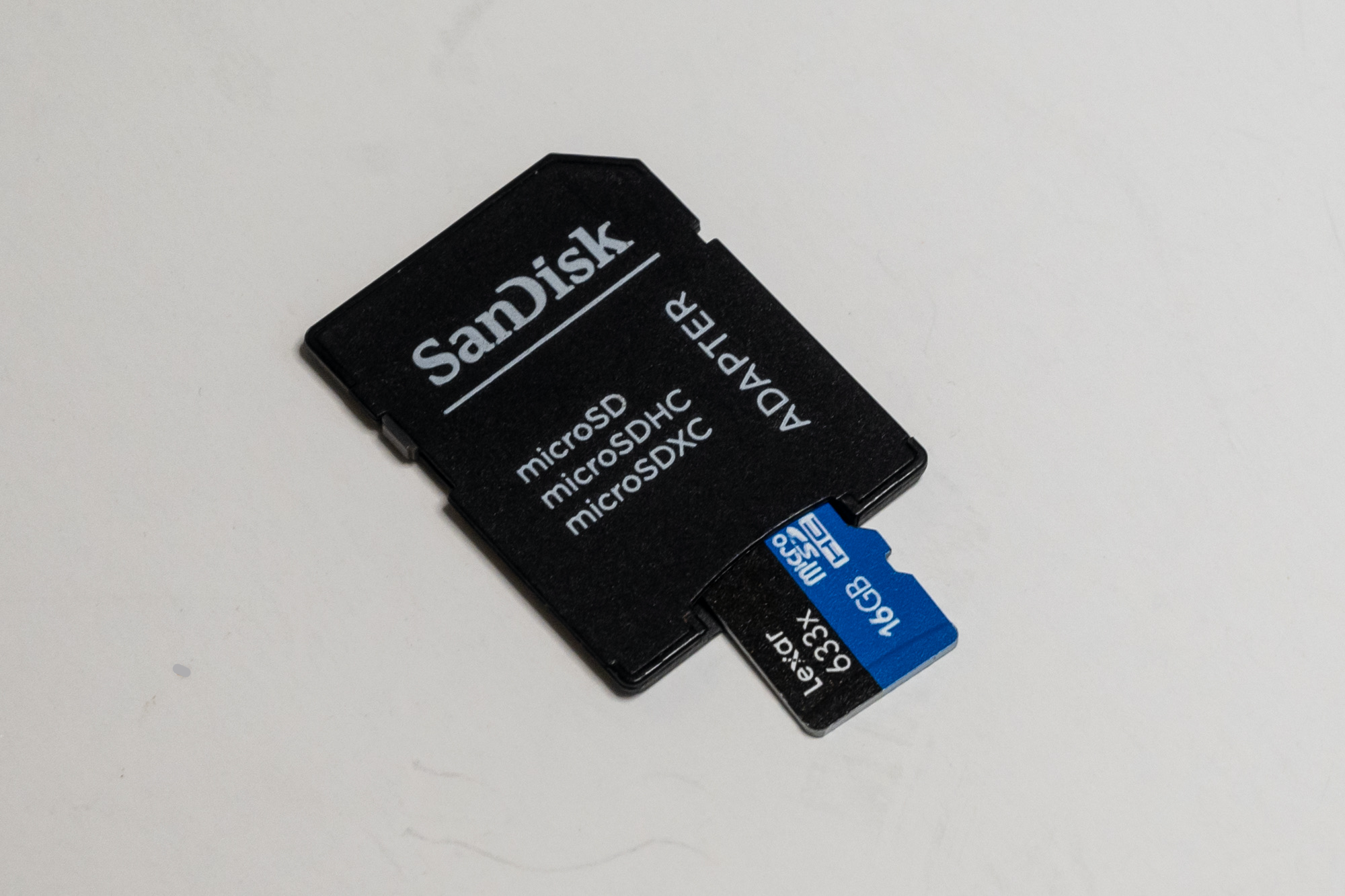
baloon111/Getty Images
- A microSD card is a miniature variation of the SD card used in small portable electronics.
- With an adapter, a microSD card can be inserted in any SD card slot and used normally.
- Because of their size, microSD cards are limited to 1 TB, while SD cards can reach much higher numbers.
- Visit Business Insider’s Tech Reference library for more stories.
The microSD card is the smallest consumer-focused flash memory card in use today. It’s a variation of the standard SD card (short for Secure Digital) and uses a similar set of electrical connections. That makes it possible to use microSD cards in standard SD card slots with the use of an adapter. MicroSD was introduced as a smaller alternative for portable electronics.
How microSD cards are different than SD
Due to the demand for ever-smaller portable electronics, by the early 2000s, the traditional SD card was proving too large for many kinds of devices, such as smartphones. In 2005, the microSD card debuted at about one sixth the size and half the thickness of the SD card. An SD card measures 32 by 24 by 2.1 mm, while the microSD card is 15 by 11 by 1 mm.

Dave Johnson/Business Insider
Despite the much smaller size, microSD cards have the same underlying architecture, including the same electrical pinout connections. Thus, instead of needing a new microSD card slot on computers, microSD cards can slip into adapters and use existing SD card slots.

Dave Johnson/Business Insider
Aside from size, the major difference between SD cards and their microSD siblings is capacity. While the newest SDUC “ultra capacity” cards can support up to 128 TB, the microSD format is limited to a maximum of 1 TB.
In addition, while most SD cards have write-protect tabs that allow you to lock them from being written to or erased, the microSD card does not have room for a physical write-protect tab and therefore can’t be locked.
The main applications for microSD cards
As you might expect, the microSD card is used to hold large volumes of data in devices that benefit from its miniature design. Larger devices still rely on regular SD cards when practical because they support much larger capacities, but in particular, devices like smartphones, dash cams, and small cameras (like action cameras) rely on the microSD card for its tiny shape.
Related coverage from Tech Reference:
-
How to clear an SD card and erase all of its data, including the hidden junk files you can't usually delete
-
What is an SD card? Here's what you need to know about the small memory cards for electronic devices
-
SSD vs. HDD: How to decide which storage option is the best for your computer
-
What is an SSD? Everything you should know about solid state drives
-
How to insert an SD card into a Nintendo Switch to save game data and screenshots, or remove a card that's already in
